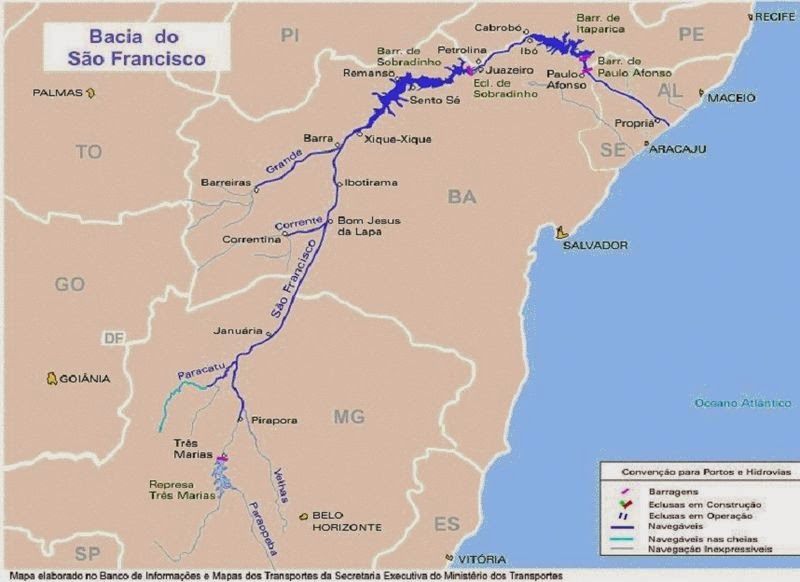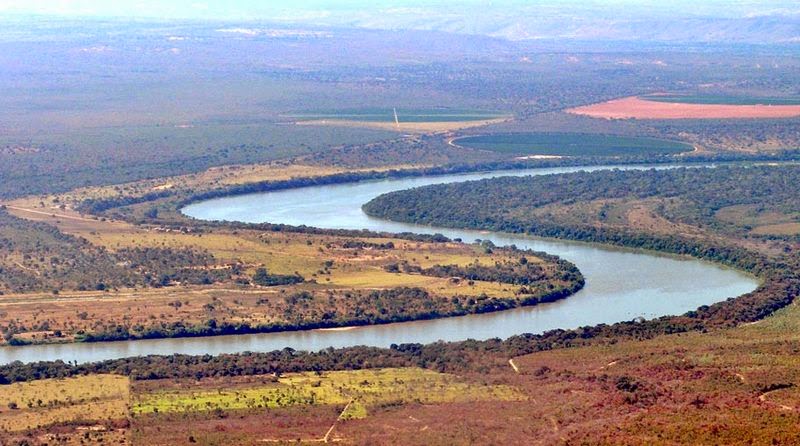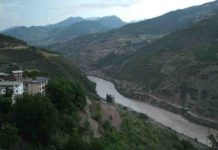The São Francisco (Portuguese pronunciation: [sɐ̃w fɾɐ̃ˈsiʃku]) is a river in Brazil. With a length of 2,914 kilometres (1,811 mi), it is the longest river that runs entirely in Brazilian territory, and the fourth longest in South America and overall in Brazil (after the Amazon, the Paraná and the Madeira). It used to be known as the Opara by the indigenous people before colonisation, and is today also known as Velho Chico (“Old Frank”).

The São Francisco originates in the Canastra mountain range in the central-western part of the state of Minas Gerais. It runs generally north in the states of Minas Gerais and Bahia, behind the coastal range, draining an area of over 630,000 square kilometres (240,000 sq mi), before turning east to form the border between Bahia on the right bank and the states of Pernambuco and Alagoas on the left one. After that, it forms the boundary between the states of Alagoas and Sergipe and washes into the Atlantic Ocean. In addition to the five states which the São Francisco directly traverses or borders, its drainage basin also includes tributaries from the state of Goiás and the Federal District.
It is an important river for Brazil, called “the river of national integration” because it unites diverse climes and regions of the country, in particular the Southeast with the Northeast. It is navigable between the cities of Pirapora (Minas Gerais) and Juazeiro (Bahia), as well as between Piranhas (Alagoas) and the mouth on the ocean, but traditional passenger navigation has all but disappeared in recent years due to changes in the river flow.
Discovery
The river was first discovered by Europeans on 4 October 1501 (by the Florentine discoverer Amerigo Vespucci, who named it after Saint Francis of Assisi, whose feast day falls on 4 October).
In 1865 the British explorer and diplomat Richard Francis Burton was transferred to Santos in Brazil. He explored the central highlands, canoeing down the São Francisco river from its source to the falls of Paulo Afonso.
The four parts of the São Francisco River
The course of the river, running through five states, may be divided into four parts, as follows:
- The high part, from its source to Pirapora in Minas Gerais
- The upper middle part, from Pirapora, where the navigable part begins, up to Remanso (Bahia) and the Sobradinho Dam
- The lower middle part, from the Sobradinho dam to Paulo Afonso, also in Bahia (bordering on Alagoas), and ending at the Itaparica Dam
- The low part, from Paulo Afonso to the river’s mouth on the Atlantic Ocean
Tributaries
The river obtains water from 168 rivers and streams, of which 90 are on the right bank and 78 on the left bank. The main tributaries are:
- Paraopeba River
- Abaeté River
- Das Velhas River
- Jequitaí River
- Paracatu River
- Urucuia River
- Verde Grande River
- Carinhanha River
- Corrente River
- Grande River
Note : The above story is based on materials provided by Wikipedia











